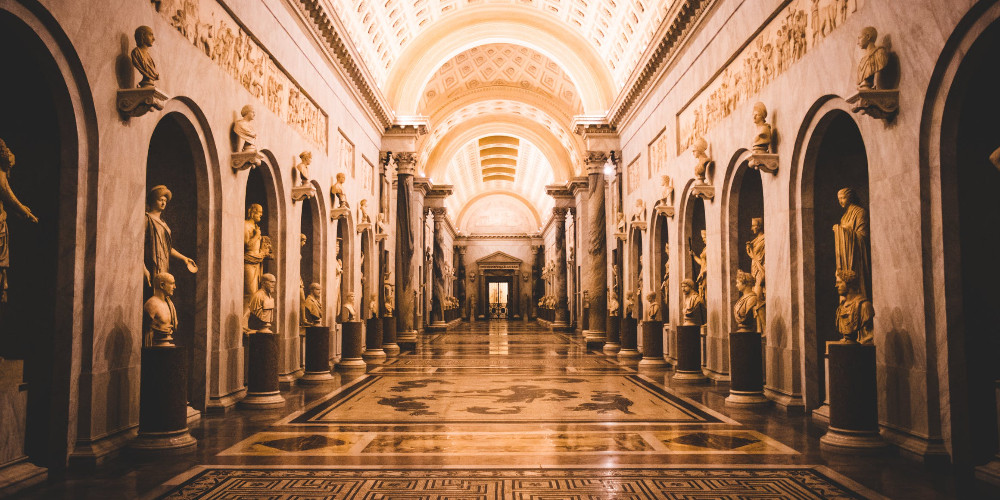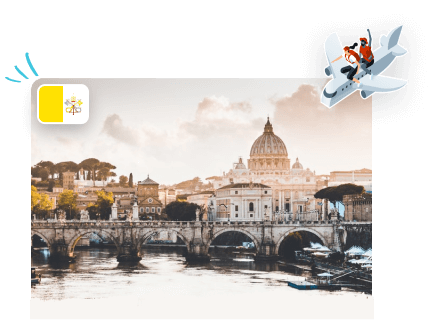
? Although it is somewhat strange to think about it with a cold mind, in the heart of Rome, there is another state, the smallest in the world, the oldest and perhaps the most powerful one: the Holy See country. What is the Holy See? It is the Vatican state, and much of that is closed inside the Walls in Rome. For those who live in the city, it is quite normal that buildings like the Bambino Gesu Hospital are part of the Vatican state what is the Holy See. Also, some churches, museums, squares, and various embassies are in this part of the city where is Holy See located too. As you probably read from the Vatican news, every day, thousands of pilgrims and tourists arrive from all over the world both to attend a papal mass or a Wednesday audience and to get to know St. Peter and his great treasures or the beautiful Vatican Museums. What does the Holy See definition mean? The Holy See definition simply means the see of Rome, which is the office or jurisdiction of the Pope. One of the most interesting facts about this country is that although it is inside of Italy, Switzerland is the most important country for them, because this country is where is Holy See guards come from. Here are 10 reasons why you should travel to Holy See.
1. Population

There is only an 825 Holy See population which makes it the smallest country in the world. Moreover, Holy See country has its own post office and passport. It gained independence from Italy on 11 February 1929. It includes several buildings, including administrative offices, post offices, churches, squares, museums, chapels, residences, and gardens. It is the only country that appears on the UNESCO World Heritage List, and that is why you should travel to Vatican City Italy, right now.
2. No passport control
When you plan to travel to Vatican City Italy, bear in mind that entry to the Vatican City for tourists can be possible either using the entrance to St. Peter's Basilica or to the Vatican Museums. Both entrances require you to pass through security lines, but there are no passport controls even though you enter another country. But, it has its own post stamps that the Holy See population uses to send letters to other countries. They can be purchased by tourists, as well, to send letters from this holiest country.
3. Timing

You can travel to Vatican city Italy, anytime. However, the high tourist season is usually from mid-June to the end of September. During this period you will find really many people; moreover, the prices and temperatures will be at the highest levels. Vatican visitors peak at 25,000 a day, graciously wandering around for a view of the artefact as they walk through museums, galleries, and courtyards. Also, it is possible to see this wonderful place live through Vatican news channels.
4. Churches and museums
 The Pope's residence
The Pope's residence, which also can be considered as the Holy See definition, is Saint Martha House. People are not allowed to enter this house, but you can enter other churches. For example, the entry to St. Peter's Basilica is free and allows access to St. Peter's Square, but does not allow access to the rest of the Vatican. To enter there and visit the museum, you need to buy tickets. The tickets can be bought online, thus saving 2-3 hours compared to buying the ticket on the spot. If you do not buy a ticket online during the high tourist season, you could wait in line for 2 hours to buy a ticket.
5. Saint Peter's Church

Saint Peter's Church is presumably what is the Holy See residents proud of mostly. In addition to being the most important church in Christianity, it is also an example of Baroque and sumptuousness unmatched in the world. Even if you are not religious, it is recommended to visit it inside at least once in your life. Like all of our churches in Italy, access is free and open to all. Try to avoid Sundays and Wednesdays because there will certainly be more crowds. Probably you had seen from the Vatican news, even if you come to Rome in the summer, remember that you are not allowed to enter the church if you have bare shoulders and legs, and in the Holy See country, they are quite rigid. It is also possible to cover yourself with sarongs if necessary. St. Peter's Basilica is really huge, and we recommend you read some info while visiting it or go with someone expert if it's your first time. You cannot fail to be enchanted by Michelangelo's Pieta and by the wonderful canopy of the altar made by Bernini. Many papal tombs built inside the basilica are truly breathtaking. In the crypt of the church, there are some tombs of Popes before the construction of the basilica and those of the Popes of the last century, including John Paul II. From the sacristy of the basilica, you can access the treasure museum, which is subject to charges.
6. Saint Peter's Square

Saint Peter's Square is the most important square of Catholic Christianity in the Holy See. Much of its architectural charm is due to the intervention of Bernini (1656-57), who created the large 240-meter wide ellipse surrounded by the splendid four-row colonnade consisting of 284 columns and 88 pillars. At the centre is the Vatican Obelisk, coming from Alexandria in Egypt, which Caligula placed in the so-called Circus of Nero (37 BC). The two side fountains were made by Carlo Maderno (1613) and Carlo Fontana (1677). The movement of the obelisk from one side of the basilica to the centre of the square dated back to from April 1585 to September 1586 and was a colossal undertaking led by Domenico Fontana for Pope Sixtus V. Then the bronze globe ( in the Middle Ages, it was believed there were the ashes of Julius Caesar) at the top was disassembled, now it is in the Capitoline Museum.
7. Vatican Museums

The Vatican Museums has the largest private collection in the world with over 9 million pieces of inventory, including 70,000 works of art ranging from Egyptian mummies, metal, and bronze artworks from the Etrurian region and paintings. Of these pieces of art, 20,000 are on display in museums, galleries, chapels, and residences of the previous Roman Popes. The museums are certainly one of the most beautiful museum complexes in the world, not only for the immense treasures housed but also for the wonderful rooms that compose them, starting from the stupendous spiral marble staircase. At any time of the year, you can visit them. Within the Vatican City State, the Vatican Museums were founded by Pope Julius II in the 16th century to house the greatest works of art accumulated over the centuries by the Popes. They were opened to the public by Pope Clement XIV in 1773. The Sistine Chapel and the papal apartments designed by Michelangelo and Raphael are also part of the large collection and can be admired up close by visitors who flock to the museums every year.
8. The Sistine Chapel
 The Sistine Chapel
The Sistine Chapelis one of the greatest wonders of the artistic world, and the entrance ticket can be combined with the Vatican Museums. People enter in groups because the number of visitors is limited. You may lose yourself in the details and colours of Michelangelo's Last Judgment. I advise you to take a guided tour to discover secrets that you would otherwise have ignored and to read more about the techniques and the years of work that were required to make this marvel.
9. The Gardens of the Holy See

The Gardens of the Holy See are the most relaxing place where both the Holy See population and guests can enjoy its beauty. They are ancient artistic treasures that exist over the centuries. From the mid-1600s Vatican Gardens is a living symbol of art for the Vatican State. For centuries, its botanical and architectural uniqueness and magnificence have been cared for by the best gardeners in the world. However, the gardens are a somewhat private area of the Vatican; they are not always accessible to the public; they can only be visited with very special private visits.
10. Castel Sant'Angelo
 Castel Sant'Angelo
Castel Sant'Angelowas known as the Mausoleum of Hadrian; then it was transformed into a medieval fortress where the Pope took refuge during the sieges and ultimately became the site of the Vatican prisons. It is connected to the Holy See by a fortified passageway, which in the past was used to make the Pope escape to safety when there was danger. Nowadays, it has been transformed into a museum, and in some special periods, it is possible to walk the small passage that leads to the Vatican.


